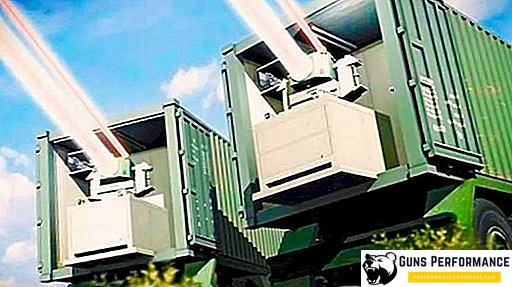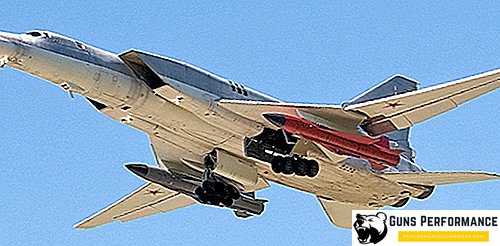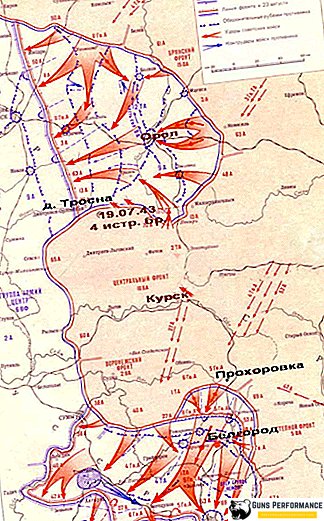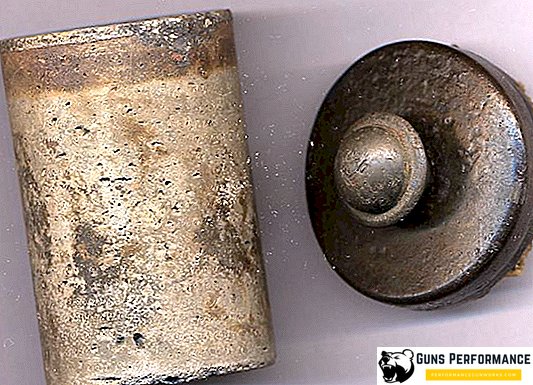Despite the fact that the Cold War has long ended, the world has not become safer. The dangers of this century come not only from terrorist groups, relations between the leading world powers also leave much to be desired. Russia is blackmailing the United States with "radioactive ashes", and the Americans surround Russia with a missile defense system, lay down new strategic submarines and conduct anti-missile tests. Increasingly, high-ranking officials and multi-star generals of both countries declare the creation of new types of strategic weapons and the modernization of old ones. One of the directions of the new arms race was the development of hypersonic aircraft, which can be used as an effective means of delivering nuclear weapons.

Recently, information appeared about the testing in Russia of a new hypersonic U-71 unmanned aerial vehicle with unique characteristics. The news was seen in the foreign press, it is extremely scarce, and we have learned practically nothing about the promising complex. In Russian sources, information is even more stingy and controversial, and in order to understand in general what a new Yu-71 weapon can be, you need to remember why the military used hypersound.
The history of hypersonic devices
Hypersound is not a new direction in the development of attack tools. The creation of aircraft with a speed several times higher than the speed of sound (more than 5 Machs) began in Nazi Germany, at the very beginning of the rocket era. These works received a powerful push after the beginning of the nuclear era and went in several directions.
In different countries, sought to create devices capable of developing hypersonic speed, there have been attempts to create hypersonic cruise missiles, as well as suborbital aircraft. Most of these projects ended in vain.
In the 60s of the last century in the United States began the development of the project of the North American X-15 hypersonic aircraft, which could make suborbital flights. Thirteen of his flights were recognized as suborbital, their height exceeded 80 kilometers.
In the Soviet Union there was a similar project called "Spiral", which, however, was never implemented. According to the plan of the Soviet designers, the dispersal jet was supposed to reach hypersonic speed (6 M), and then a suborbital apparatus, equipped with rocket engines, took off from its back. This device was planned to be used mainly for military purposes.
Work in this direction is being carried out today by private companies that plan to use such devices for suborbital tourism. However, these developments are already at the present level of technology development and, most likely, will end successfully. Today, to ensure high speed of such devices often use ramjet engines, which will make the use of such aircraft or drones relatively cheap.

The creation of cruise missiles at hypersonic speed is also moving in the same direction. In the US, the government’s Global Prompt Strike program is developing (fast or lightning-fast global strike), which is aimed at acquiring the ability to deliver a powerful non-nuclear strike to any point on the planet within one hour. As part of this program, new hypersonic devices are being developed that can both carry a nuclear charge and do without it. As part of Global Prompt Strike, several projects of cruise missiles are advancing at hypersonic speed, but Americans cannot yet boast of serious achievements in this direction.
Similar projects are being developed in Russia. The fastest cruise missile put into service is the Brahmos anti-ship missile, created jointly with India.
If we talk about spacecraft that develop hypersonic speed, then we should remember the reusable spacecraft that develop speed during descent many times more than the speed of sound. These ships include the American shuttles and the Soviet Buran, but most likely their time has passed.
If we are talking about unmanned hypersonic aircraft, then it should be noted hypersonic warheads, which are the combat part of ballistic missile systems. In fact, these are warheads capable of maneuvering at hypersonic speeds. They are often called gliders for their ability to plan. Today it is known about three countries in which they are working on similar projects - these are Russia, the USA and China. It is believed that China is the leader in this direction.
The American Hypersonic AHW (Advanced Hypersonic Weapon) combat unit passed two tests: the first was successful (2011), and during the second the rocket exploded. According to some sources, the AHW glider can reach speeds of up to 8 Mach. The development of this device is carried out within the Global Prompt Strike program.
In 2014, China conducted the first successful tests of the WU-14 hypersonic glider. There is evidence that this combat unit can reach a speed of about 10 Machs. It can be installed on various types of Chinese ballistic missiles, in addition, there is information that Beijing is actively working to create its own hypersonic ramjet engine, which can be used to create vehicles launched from aircraft.

The Russian response to the development of strategic competitors should be the U-71 (Project 4202), which was tested at the beginning of this year.
Yu-71: what is known today
In the middle of 2018, an article in The American Free Beacon caused a great response. According to journalists, in February 2018 a new U-71 military hypersonic aircraft was tested in Russia. The material reported that the Russian apparatus can reach speeds of up to 11 thousand km / h, and also maneuver on the descent trajectory. Such characteristics make it virtually invulnerable to any modern missile defense system.
U-71 is also called a glider. Its launch took place in a near-earth orbit, and the intercontinental ballistic missile SS-19 Stilet (UR-100 N) delivered it there. It started from the area of the Dombarovsky unit of the Strategic Missile Forces. According to the information of the same publication, it is this military unit that will be armed with similar combat blocks-gliders until 2025.
Experts believe that the U-71 is part of the top-secret Russian project 4202, associated with the development of new strategic weapons, which was launched in 2009. Information about the new combat unit is very small (which is quite understandable), only the speed and ability to maneuver at the final stage of the trajectory is called. However, even with such characteristics of the U-71, any means of anti-missile defense of our days are no longer terrible.
Back in 2004, the Russian General Staff stated that an aircraft had been tested that was capable of developing hypersonic speed, making maneuvers both in height and course. The launch from the Baikonur IBRB UR-100N UTTH launch site on a target at the Kura test site coincides with this time.
In 2011, information appeared on a test launch of a ballistic missile with special equipment capable of overcoming modern and future missile defense systems. Probably, one of the most promising Russian ballistic missiles will be equipped with a new warhead, most often called the new Sarmat missile (ICBM RS-28).
The fact is that such warheads have a relatively large mass, therefore it is better to install them on powerful carriers capable of carrying several Ju-71 at once.
According to scant information from Russian sources, the development of the project 4202 is carried out by the NPO Mashinostroyenia in the Moscow region city of Reutov. In addition, the press reported on the technical re-equipment of the Strela Production Association (Orenburg), undertaken to participate in the 4202 project.
Warheads of modern ballistic missiles on the descent trajectory develop hypersonic speed and are capable of performing rather complex maneuvers. Experts believe that the main difference in the Yu-71 is even more complex flight, comparable to the flight of an airplane.
In any case, the adoption of such units into service will significantly increase the effectiveness of the Russian Strategic Missile Forces.
There is information about the active development of hypersonic cruise missiles, which can be a new weapon for Russian combat aircraft, in particular, the promising strategic bomber PAK DA. Such missiles are a very difficult target for missile defense interceptor missiles.
Such projects can make the missile defense system as a whole useless. The fact is that objects flying at high speed are extremely difficult to intercept. To do this, interceptor missiles must have great speed and the ability to maneuver with huge overloads, and such missiles do not exist yet. It is very difficult to calculate the trajectory of maneuvering warheads.












